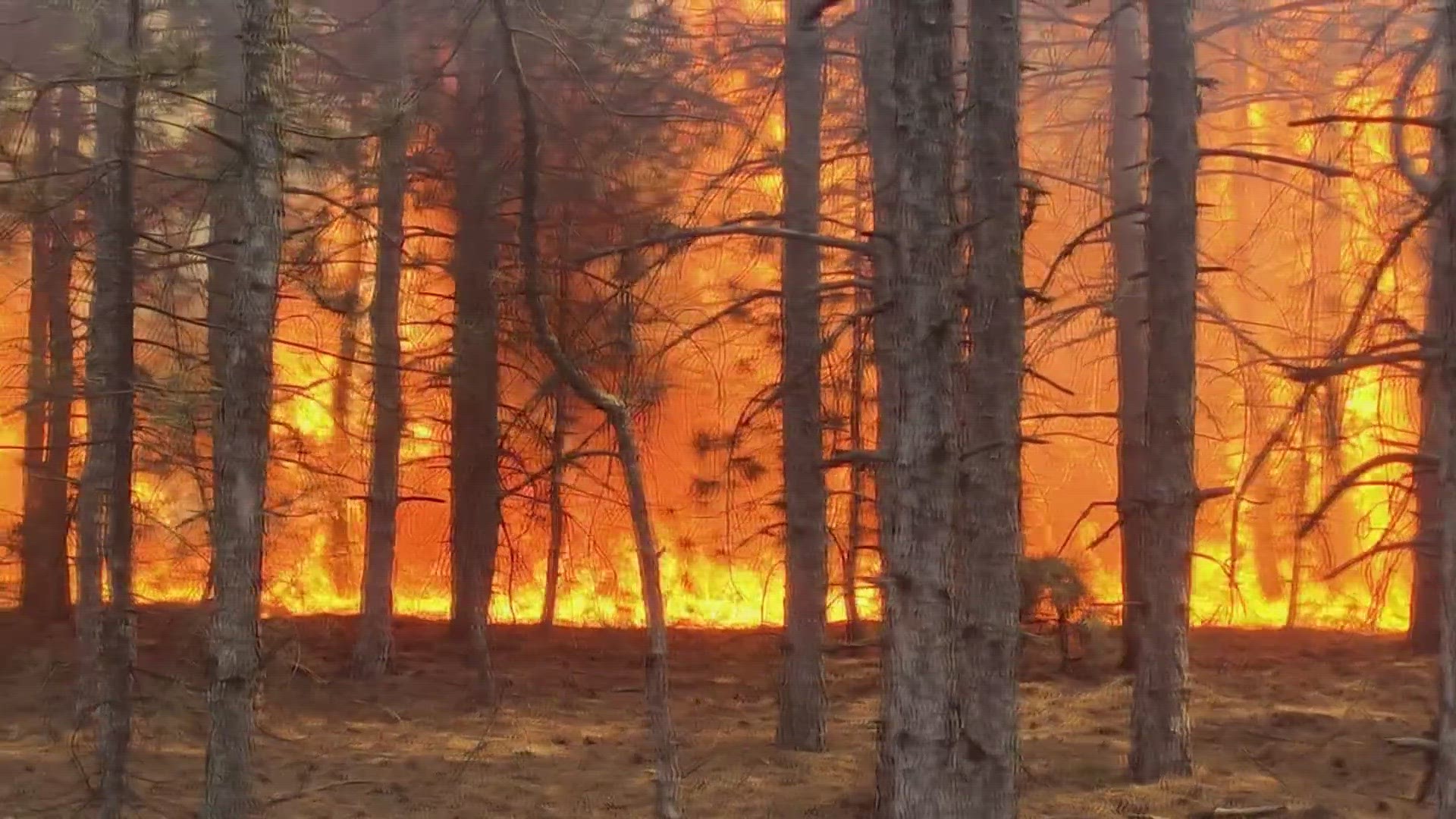COLORADO, USA — One of the basic thermodynamic principles of climate science is that the warmer the atmosphere the more water vapor or moisture it can hold.
The Clausius-Clapeyron Equation shows that water vapor capacity increases by about 7% for every one degree Celsius (1.8 Fahrenheit) of warming.
But just because the atmosphere can hold more moisture doesn’t mean it is.
“It turns out that in all arid and semi-arid regions of the world, there hasn’t really been a rise in water vapor," said climate scientist Isla Simpson with the National Center for Atmospheric Research (NCAR). "This is contrary to traditional thinking and a very surprising finding."
She said since places like Colorado and the rest of the southwest U.S. have not seen any additional atmospheric water vapor, they are already about 7% drier than what climate models projected for the current period.
That increases the likelihood of natural hazards tied to additional heat and drier air.
“So, there’s a chance that projections for wildfire could be underestimated because we’re not getting their processes right in our models.”
Simpson said more intense wildfires were already projected for places like Colorado and this would make them even more likely. But it would depend on where that 7% deficit in moisture is coming from.
Not only does drier air increase fire risk, but she said there's also a better chance for more intense heat waves because of the way water vapor helps regulate daily temperatures through atmospheric evaporation.
She said there could be several possible explanations. It could be that the amount of moisture being transported from the oceans over the land masses is less than expected, but her leading theory is that the amount of moisture available on the land surface for evaporation is less than what is being represented in the climate modeling.
That could simply be a matter of the land drying out more than anticipated before evaporation.
“Or one possibility is that plants maybe are doing a better job at holding on to their moisture and they’re not giving that up to the atmosphere,” she said. "If that were the case, maybe that's a good thing for plants and you would think that would actually decrease fire risk."
But she said it’s very difficult to measure the amount of moisture available on land and it's even more difficult to track the exact amount of moisture as it evaporates from the Earth’s surface whether it's from the oceans, land or plants.
But if we can be more specific with the data entered into computer models, we can get more specific results about what this moisture deficit really means for wildfires.
“So, I think it’s something we should be concerned about, and we want to improve it in our models," said Simpson. "Then we can get a sense of how much this adjusts our predictions for what we’re going to experience in the coming decades.”
The research led by Simpson was published in the Proceedings of the National Academy of Sciences in December.
SUGGESTED VIDEOS: Colorado Climate

